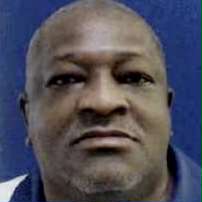
1965 - 2024
Willie James Pye
Summary
Name:
Years Active:
1993Birth:
January 06, 1965Status:
ExecutedClass:
MurdererVictims:
1Method:
ShootingDeath:
March 20, 2024Nationality:
USA
1965 - 2024
Willie James Pye
Summary: Murderer
Name:
Willie James PyeStatus:
ExecutedVictims:
1Method:
ShootingNationality:
USABirth:
January 06, 1965Death:
March 20, 2024Years Active:
1993bio
Willie James Pye was born on January 6, 1965, in the state of Georgia, United States. He grew up in a troubled household marked by neglect, poverty, and instability. One of at least ten children, Pye endured a childhood shaped by abuse and lack of supervision. His mother was the family’s primary provider, often working 10 to 12 hours a day while his father spent periods in prison, leaving the children to fend for themselves. The absence of structure and consistent care contributed to Pye’s struggles throughout his youth, including significant academic difficulties.
Pye dropped out of junior high school and was later diagnosed with an IQ of 68, placing him in the range of intellectual disability. Reports from later court appeals also indicated that he likely suffered from fetal alcohol syndrome due to his mother’s heavy alcohol use during pregnancy, which may have impaired his cognitive development and impulse control.
As a young adult, Pye began to accumulate a criminal record. At age 20, in 1985, he was arrested for burglary and served a five-year prison sentence. He was released in 1990 but struggled to reintegrate into society. He maintained an unstable lifestyle, and his relationships were volatile. One of those relationships — with Alicia Lynn Yarbrough — would ultimately end in tragedy. Pye and Yarbrough had an on-and-off relationship that ended bitterly. Yarbrough later had a child, which Pye believed was his, and he became enraged upon discovering that the child’s birth certificate listed another man as the father.
murder story
On November 17, 1993, Willie James Pye’s life took a decisive and irreversible turn. That day, he armed himself with a newly purchased .22 caliber pistol and joined two accomplices — 15-year-old Anthony Freeman and 25-year-old Chester Adams — to rob the home of Yarbrough’s new boyfriend. However, when the trio arrived at the residence, they found only Yarbrough and her infant child present. The plan quickly escalated from robbery to abduction.
The men kidnapped Yarbrough and transported her to a nearby motel. There, she was brutally raped and robbed of her jewelry. After the assault, the perpetrators drove her to a remote dirt road. Once there, Pye ordered Yarbrough out of the car, forced her to lie face down on the ground, and shot her three times. She died instantly from the gunshot wounds. Yarbrough’s body was discovered later that day, prompting a swift investigation and subsequent arrests.
All three men were taken into custody within days of the murder. Freeman confessed and implicated Pye and Adams. DNA evidence linked Pye directly to the sexual assault, further solidifying the case against him.
During his 1996 trial, Freeman entered into a plea deal and testified against Pye. The prosecution presented a strong case, including forensic evidence and witness testimony, leading to Pye’s conviction on multiple counts: murder, kidnapping, rape, burglary, and robbery. The jury recommended a death sentence for the murder charge. Pye was sentenced to death, as well as receiving a 20-year sentence for burglary and three life sentences for the remaining charges. His conviction was upheld on appeal in 1998
Chester Adams was tried separately and pleaded guilty in 1997. He received five consecutive life sentences and remains incarcerated. Freeman, who had turned state’s evidence, was sentenced to life imprisonment but was paroled in May 2020 after serving 24 years.
Pye’s legal saga continued for decades. In 2021, the 11th Circuit Court of Appeals briefly vacated his death sentence, ruling that his defense attorney’s failure to present mitigating evidence — including his abusive childhood and intellectual impairments — had prejudiced the jury. However, the decision was reversed a year later, reinstating the death sentence.